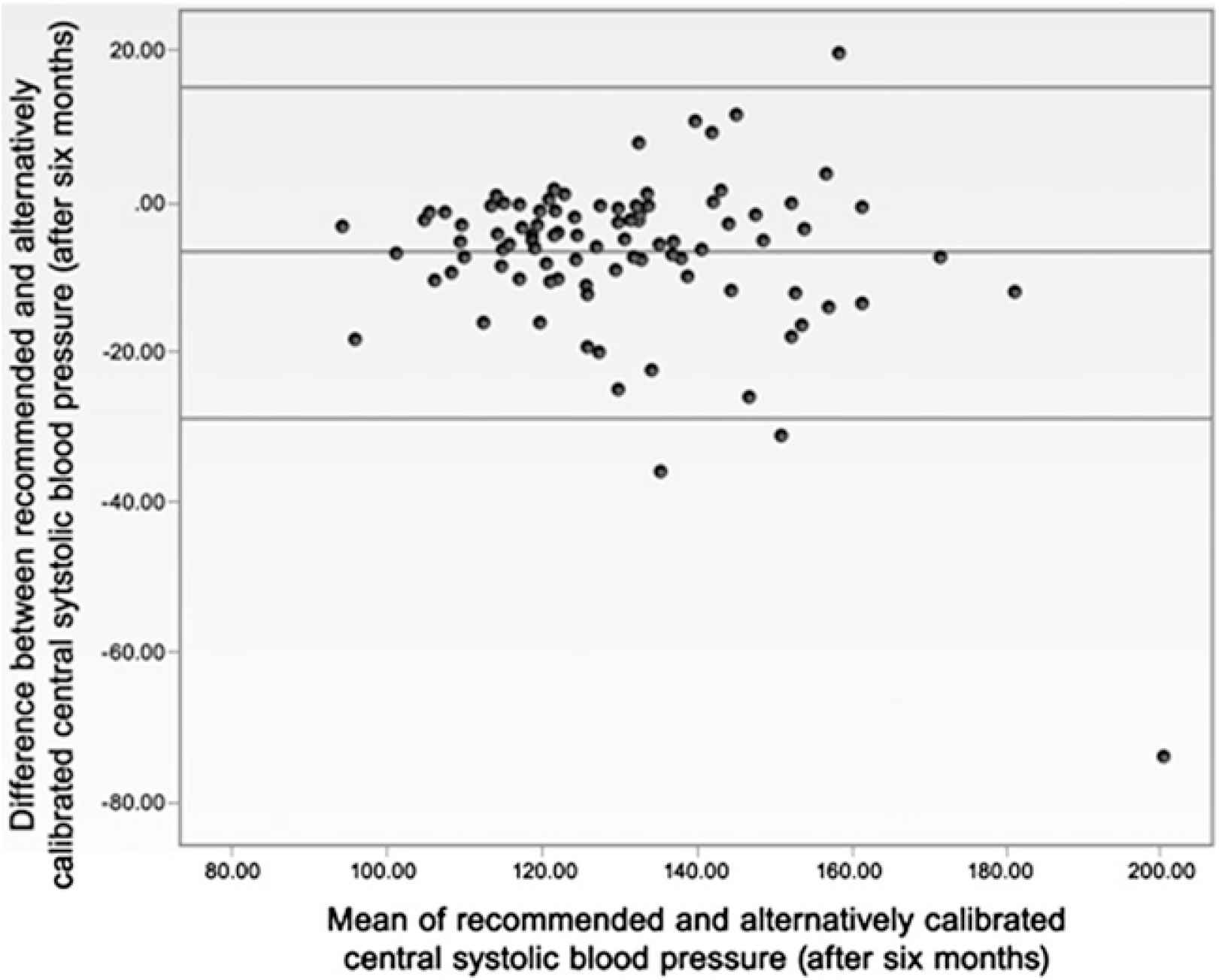P6.13 IMPACT OF CALIBRATION ON ESTIMATES OF CENTRAL BLOOD PRESSURE
- DOI
- 10.1016/j.artres.2011.10.098How to use a DOI?
- Open Access
- This is an open access article distributed under the CC BY-NC license.
Methods: We included 122 patients with type-II-diabetes and hypertension. They were characterized as having controlled (CH), uncontrolled (UH) or resistant (RH) hypertension based on ambulatory blood pressure measurement and number of antihypertensive agents. CBP was estimated using Sphygmocor. We calibrated the radial pressure wave as recommended by the manufacturer using brachial systolic (BSBP) and diastolic (BDBP) BP and used the generalized transfer function for estimation of the aortic pressure waveform. Afterwards we recalibrated the radial pressure wave using BDBP and mean arterial pressure (BMAP). Data were analyzed offline in customized software.
Results: Estimates of CSBP were significantly correlated (R2=0.83, P<0.0001 at baseline and R2=0.71, P<0.0001 after six months). As shown in figures 1 and 2 CSBP was 6.1 mmHg to 6.6 mmHg lower when calibrated with BSBP and BDBP and variation of difference ranged from 14.6 mmHg to 22 mmHg.
Differences between BSBP and CSBP lost significance in patients with RH after six months when alternatively calibrated with BDBP and BMAP as did reduction in CSBP.
Conclusion: Although we found good correlation between estimates of CBP using either calibration, variation of difference was high suggesting that the difference between the 2 calibration methods is more than a systematic error. And our results show that it could be important to take into account measures used for calibration when interpreting clinical effect on non-invasive estimates of CBP.


Cite this article
TY - JOUR AU - T.K. Soender AU - L.M. Van Bortel AU - J. Lambrechtsen AU - J. Hangaard AU - J. Moeller AU - K. Egstrup PY - 2011 DA - 2011/11/29 TI - P6.13 IMPACT OF CALIBRATION ON ESTIMATES OF CENTRAL BLOOD PRESSURE JO - Artery Research SP - 175 EP - 175 VL - 5 IS - 4 SN - 1876-4401 UR - https://doi.org/10.1016/j.artres.2011.10.098 DO - 10.1016/j.artres.2011.10.098 ID - Soender2011 ER -
